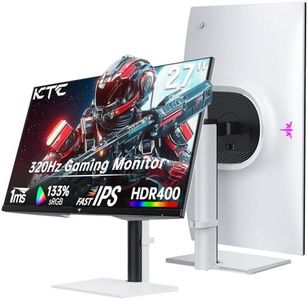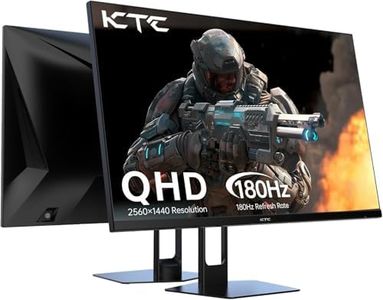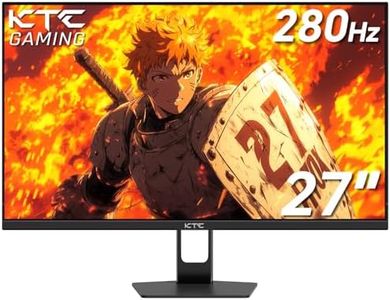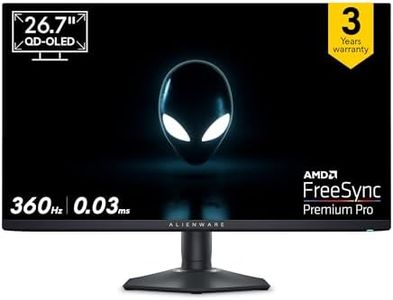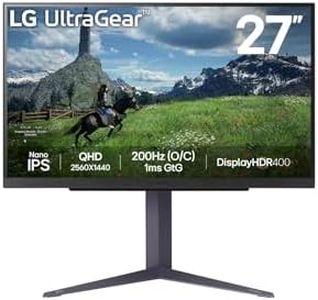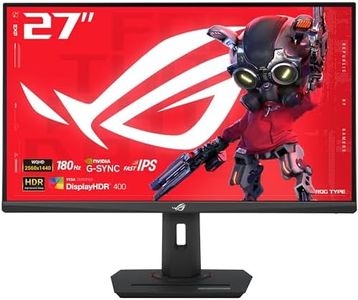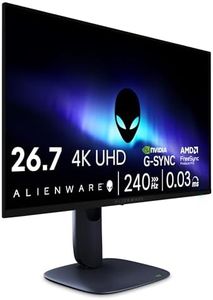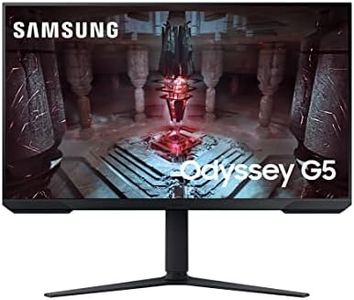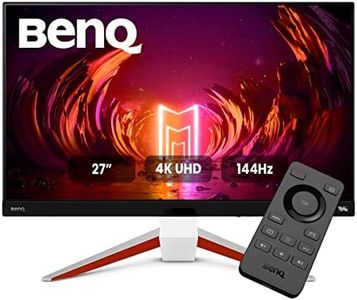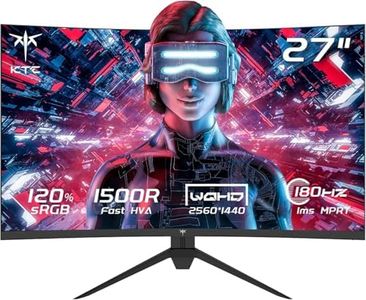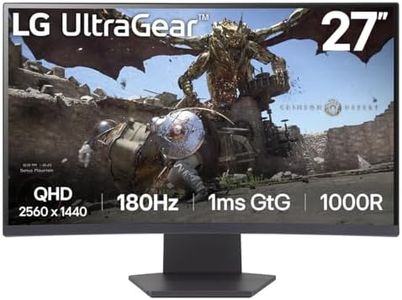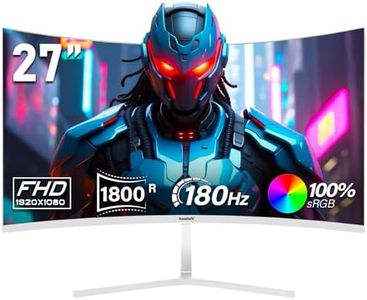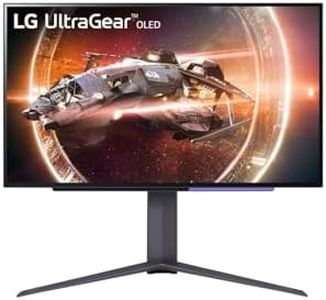We Use CookiesWe use cookies to enhance the security, performance,
functionality and for analytical and promotional activities. By continuing to browse this site you
are agreeing to our privacy policy
10 Best 27 Inch Gaming Monitors
From leading brands and best sellers available on the web.Buying Guide for the Best 27 Inch Gaming Monitors
Choosing a 27-inch gaming monitor involves balancing several important features to match your gaming preferences and setup. Understanding these specifications will help you make a smart decision and enjoy an immersive gaming experience. The right monitor for you largely depends on what types of games you play most often, the performance of your gaming PC or console, and your personal preferences regarding visuals, speed, and comfort.ResolutionResolution refers to the number of pixels displayed on the screen, impacting how sharp and detailed your games look. Higher resolutions like 2560x1440 (also called 1440p or QHD) make visuals appear more detailed compared to the more basic 1920x1080 (Full HD). On a 27-inch monitor, 1440p is often seen as the sweet spot, providing a noticeable upgrade in clarity without being too demanding on your graphics card, while 4K (3840x2160) offers ultra-sharp details but requires powerful hardware to run smoothly. Choose a resolution that balances your PC’s capabilities with your desire for image sharpness. If you play fast-paced games and your PC isn’t high-end, 1080p can still look good and provide high frame rates.
Refresh RateRefresh rate, measured in Hertz (Hz), tells you how many times per second the monitor can update the image. Higher refresh rates provide smoother motion, which feels better for fast-paced games like shooters or racing titles. Common refresh rates are 60Hz, 75Hz, 120Hz, 144Hz, and even higher. For casual or single-player gaming, 60-75Hz is enough, but if you play competitive or action-heavy games, monitors with 120Hz or 144Hz (or higher) offer a noticeably smoother experience.
Response TimeResponse time is the speed at which pixels change from one color to another, usually listed in milliseconds (ms). Lower response times reduce motion blur and ghosting, making fast-moving images clear and sharp. Typical values range from 1ms to 5ms. If you are into fast and competitive games where quick reactions matter, go for a monitor with a 1ms or 2ms response time. For slower games or general use, 4-5ms is usually acceptable.
Panel TypeThe panel type affects the monitor’s color accuracy, viewing angles, and response times. The most common types are IPS (In-Plane Switching), TN (Twisted Nematic), and VA (Vertical Alignment). IPS panels have great colors and wide viewing angles, ideal for immersive visuals, but may have slightly slower response times. TN panels have the fastest response times and are usually cheaper, but colors and angles are not as good. VA panels offer strong contrast, making dark scenes look better, but can have slower response times. Think about whether you prioritize vibrant visuals or fast reactions when making your choice.
Adaptive Sync TechnologyAdaptive Sync technologies, such as AMD FreeSync or NVIDIA G-SYNC, help prevent screen tearing and stuttering by synchronizing the monitor's refresh rate with your graphics card. This keeps gameplay smooth, especially when the game’s frame rate changes often. If your graphics card supports one of these technologies, picking a matching monitor can greatly improve your gaming experience, particularly in fast or graphically demanding games.
Ergonomics and ConnectivityErgonomics covers how easily you can adjust the monitor’s height, tilt, and rotation for comfortable viewing. Good ergonomics help reduce neck and eye strain during long gaming sessions. Connectivity refers to the types and numbers of ports (HDMI, DisplayPort, USB, etc.), allowing you to hook up your devices easily. Think about your desk space and the device connections you need; a monitor with flexible adjustments and plenty of ports will be more convenient in the long run.
Color Accuracy and CoverageColor accuracy means how true and lifelike colors appear. Monitors with good color coverage (such as high sRGB or DCI-P3 percentages) can display more shades and realistic images. This matters more if you enjoy games with vibrant visuals or plan to use your monitor for creative work like editing photos or videos. If you just want a basic gaming experience, this may be less important, but for those who care about great visuals, better color specs can add to your enjoyment.
